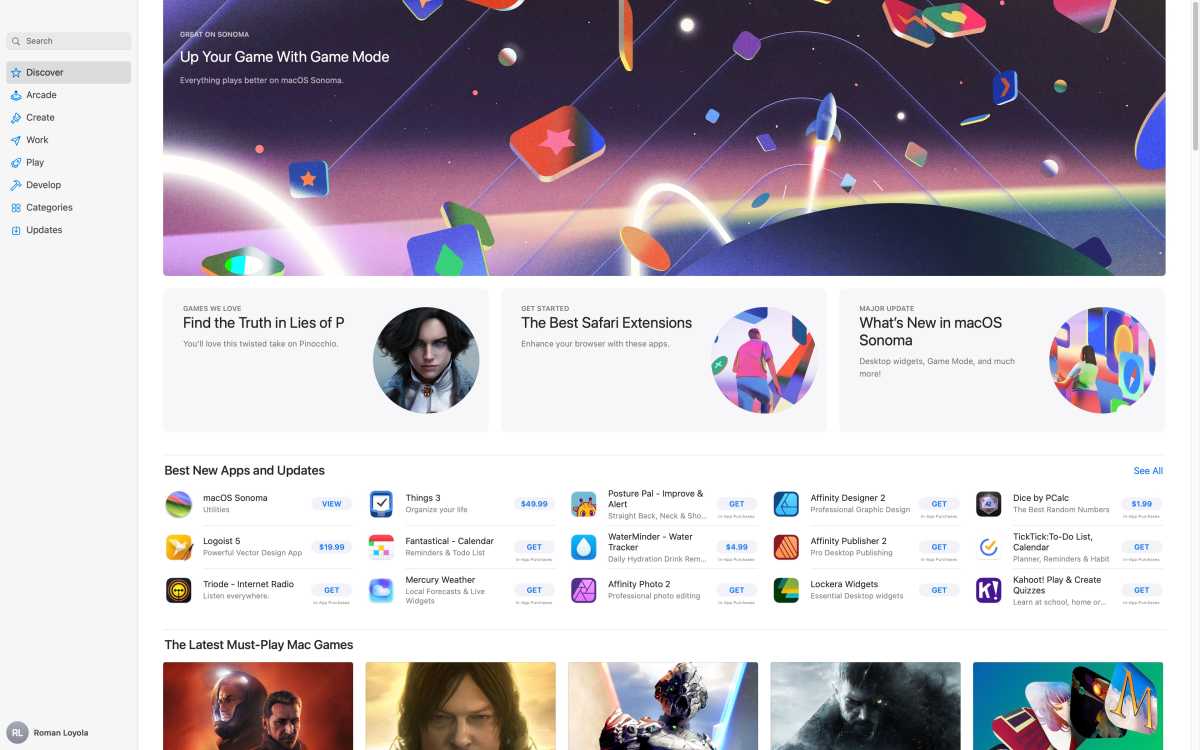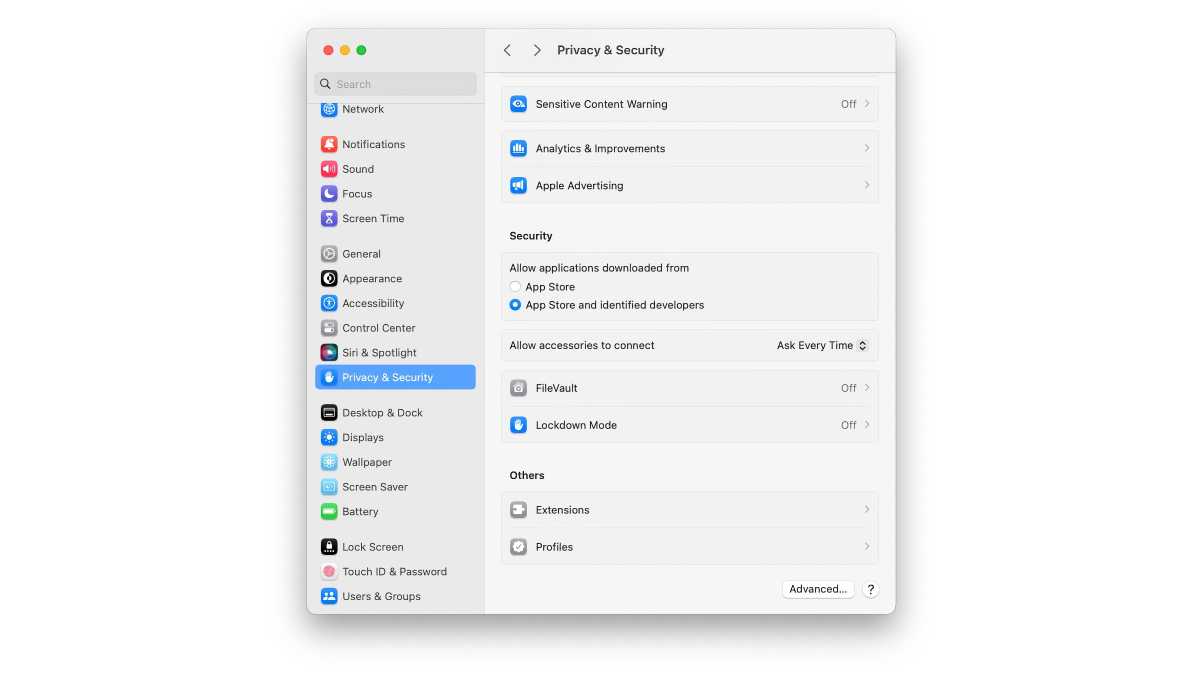Apple’s goal of increasing the safety of the Mac is gradually causing its downfall.
Macworld
As a result of a strange sequence of steps to solve a problem, I recently had to set up my Mac again without transferring any of my settings for the first time in a very long time. Instead of years, we’re talking about decades.
I had to go through all of the default settings of Apple software, manually input license numbers for software not purchased from the Mac App Store, and essentially redo every decision I had made in the past few years in order to return to my desired setup.
The encounter served as a reminder that Apple needs to improve the process of upgrading or switching to a new Mac. Additionally, it highlighted the excessive influence of the Security and Privacy team on the overall macOS experience.
You spoiled the excitement of New iPhone Day!
In the past, Apple faced a significant issue: purchasing a new iPhone was not an enjoyable experience. What should have been a thrilling moment for someone buying new technology – “I now have a new iPhone!” – was often marred by long queues, unsuccessful backups, restores, and activations, followed by a difficult recovery process where many app settings and logins were lost. This was not an ideal situation.
However, I must credit Apple for their efforts in improving the iPhone upgrade process in the past seven years. While we often discuss the major iOS updates and their impact on the user experience, Apple has also put in a significant amount of work behind the scenes to enhance the transfer process between devices.
Currently, Apple’s activation procedures appear to be significantly more dependable. It is possible to transfer information from one iPhone to another, and this process has been effective for me. If you must restore from an iCloud backup, Apple will prompt you to back up your old iPhone first. The operating system version is verified. Pairing the two devices has been simplified thanks to proximity detection and pairing by using one phone’s camera to scan the other phone’s screen.
If you choose to upgrade your iPhone, it is likely that everything will function smoothly. And if there are any minor issues, they are not as severe as they were in 2016.
Asking permission
Unfortunately, this leads us to the unfortunate condition of macOS. Over the past month, I have completed various transfers of macOS devices, performed clean installations, and ultimately created a completely new home folder. Through this experience, I have discovered that the process of setting up macOS is unpleasant due to its focus on security and privacy.

Although Apple does not impose limitations on Mac users accessing the Mac App Store, this has led to an excessive focus on software security by Apple.
Foundry
Choose your downfall: You can face a swift death from a constant stream of privacy warnings, or you can endure a slow demise by constantly managing privacy warnings every time you use a new application. Either path will result in your demise.
To provide some context, Apple recognized that their operating systems, iOS and iPadOS, were created with strong security measures in mind. However, macOS was built with a different approach for a previous time period. This allowed anyone to install and run software on a Mac, making it less secure compared to iOS and iPadOS. The question then becomes: how can this issue be addressed?
Apple did not follow through with our concerns that they would make the Mac App Store the sole method for running software on Macs. Instead, they implemented numerous security measures for macOS. The majority of current Mac applications are signed and approved by Apple using cryptography. Any that are not will require the user to go through additional steps to authorize them before running.
This is a notable accomplishment, achieving a middle ground of allowing users to install any desired software while also safeguarding their personal information from potentially harmful programs. These lessons could prove useful in case Apple is required to allow sideloading of apps on iOS and iPadOS in the future.
Although I commend the general strategy for Mac security, I cannot support some of the specific measures. In simple terms, Apple’s security measures for the Mac are excessive.
My software, my Mac
Whenever I launched an application on my Mac after resetting, transferring, or updating the operating system, I was bombarded with security alerts. This is due to the limited capabilities of Mac apps unless they receive explicit permission from the user. For example, if an app needs to access files on my Desktop, it will request permission. The same goes for accessing my Documents folder, using my microphone or video camera, reading various files and folders, accessing the disk, and utilizing accessibility and automation features. Each action requires a separate permission request.
I am unsure if the efforts of third-party developers have successfully improved the situation. Upon opening certain apps, I am presented with a complex process that requires me to grant permission for each item individually. This can become chaotic when multiple apps are simultaneously requesting access to different sections of the Settings app.
Additionally, whenever I give permission, Apple constantly displays another alert prompting me to decide whether to relaunch my apps at a later time in order to gain permission, or to have the system quit and immediately reopen them. However, it appears that these apps are already functioning with permission. Since some of them are currently in the middle of setup instructions, I am hesitant to force them to quit.

Apple should make changes to the Privacy & Security settings on macOS in order to simplify the process of setting up a Mac and installing software.
Foundry
This all feels like an enormous waste of time. While the idea that Apple should request user approval before granting access seems like a good one, it doesn’t empower me as a user to grant approval more broadly. Instead, every single permission request pops up, one at a time, until the system is finally satisfied.
The situation is extremely exasperating. This software belongs to me and runs on my computer, but there are times when it seems like Apple believes it has all the control. They need to step back.
for
What is required for
Reworded: macOS should improve its method of granting permissions for specific apps by providing users with a more comprehensive option to approve them. Instead of having to approve multiple items in a specific order, there should be a single window that displays all requested permissions, allowing for individual or overall approval.
Certain permissions from Apple are overly specific. I am often required to grant access to Desktop, then Documents, and then files on external storage. Even after completing these steps, I may still have to manually give the app Full Disk Access in order for it to function properly. It would be more convenient if I could just grant full disk access to the app when I download it.
Users should have the ability to control the level of permission for specific tasks. For instance, I would like to give my software access to read my Desktop and Documents folders on a global scale. It is illogical to restrict the software’s access to these folders, as there is no reason for it not to have permission.
Furthermore, it may be beneficial for Apple to allow users to activate a “restore mode” that automatically grants common permission requests for a set period of time. This would alleviate the difficulties of recovering from a restore or migration.
I am now able to foresee the reactions to these inquiries. Individuals with technical expertise often tend to present worst-case scenarios to justify their need for authoritarian control over ordinary users. While requesting for batch approval of permissions or temporarily granting all permissions may leave room for malicious software to sneak in unnoticed and cause harm to an unsuspecting user’s system.
Repeatedly asking for permission has a similar outcome. The constant clicking of these warnings becomes tiresome and we ultimately end up approving everything in order to move on with our day.
In summary, Apple’s commendable security system on macOS lacks consideration for user experience, particularly during upgrades or migrations that require new permissions to be granted. This has resulted in a problematic user interface.
However, as we have learned from the iPhone, the process of obtaining new software or transitioning to a new device can be significantly improved – but only if Apple is willing to put in the effort.
